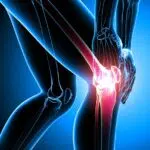The 5 Major Risk Factors for Cardiovascular Disease & How You Can Reduce Your Risk.
Cardiovascular disease (CVD) is an umbrella term for a prevalent group of conditions affecting the blood vessels and heart. These include conditions such as coronary heart disease, strokes, aortic disease and peripheral arterial disease. The good news is that many risk factors for CVD are modifiable. This article lists the five leading risk factors and briefly outlines active measures you can take today to reduce your risk of developing CVD.
1- High blood pressure (hypertension)
High blood pressure can silently lead to the thickening and hardening of your arteries, increasing the risk of complications such as heart attacks, strokes, and aneurysms. An ideal blood pressure reading is between 90/60mmHg and 120/80mmHg, whereas pressures consistently above 140/90mmHg are classified as hypertension.
2- Abnormal blood cholesterol levels
Cholesterol is a substance produced by our livers that maintains cell integrity and acts as a precursor for steroid hormones, vitamin D and bile acids. However, high cholesterol levels due to dietary habits can increase the risk of plaques forming on arterial walls and lead to subsequent narrowing and reduced blood flow.
There are two types of cholesterol known as LDL (low-density lipoprotein) – the “bad” cholesterol, which contributes to the build-up of arterial plaques, and HDL (high-density lipoprotein) cholesterol – the “good” cholesterol, which has a protective role in the cardiovascular system. Too much LDL cholesterol and too little HDL cholesterol can increase cardiovascular risk.
3- Obesity
Excess body fat can lead to abnormal blood cholesterol levels and hypertension, as described above. Furthermore, obesity increases the risk of developing diabetes, which increases the risk of heart disease by two to four times.
4- Smoking
Smoking or tobacco use harms the cardiovascular system in many ways, from impairing the oxygen-carrying capacity of the blood to raising blood pressure and damaging the arterial walls. Consequently, there is a greater risk of heart attacks. Second-hand smoke exposure can still carry the same effects as above.
5- Sedentary Lifestyle
A lack of exercise can contribute to the first three major risk factors mentioned above. Regular exercise not only improves your circulatory system and makes the heart more robust, but it also improves muscle function and the body’s ability to use oxygen.
Tips on how you can reduce your risk of cardiovascular disease.
- Eat a balanced diet that is low in saturated fat, low in salt (less than 6g a day) and sugar. Try to eat 5 portions of fruits, berries and vegetables each day.
- Be active and try to achieve at least 30 minutes of modest activity such as walking for at least five days per week.
- Maintain a healthy body weight.
- Drink less caffeine and avoid or reduce your alcohol intake.
- Stop smoking and avoid exposure to second-hand smoke.
- Control your blood pressure by following the guidance from your doctor.
To find out more about cardiovascular disease, what treatment options are available to you and how you can better manage your symptoms, please feel free to book an appointment with one of our GPs by either visiting our website or call us on 0203 371 0995.



